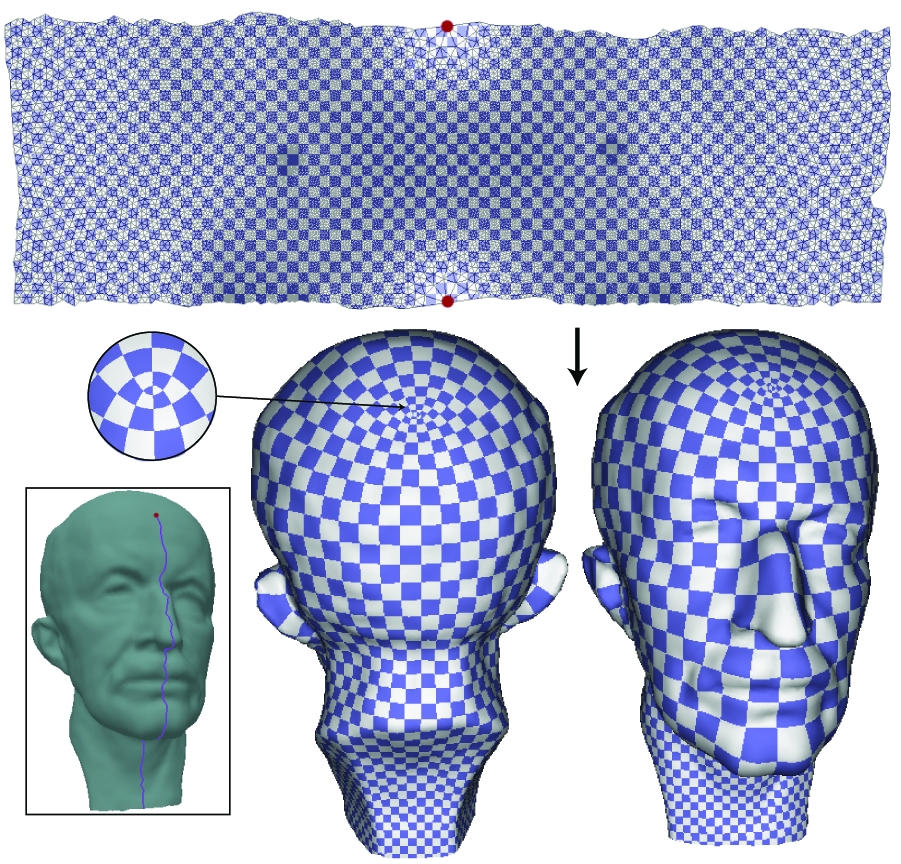 Broad Area Colloquium For AI-Geometry-Graphics-Robotics-Vision
Broad Area Colloquium For AI-Geometry-Graphics-Robotics-Vision
(CS 528)
Three Points Make a Triangle; Or a Circle...
Peter Schroeder, Caltech
May 9, 2005, 4:15PM
TCSeq 201
http://graphics.stanford.edu/ba-colloquium/
Abstract
Many algorithms in geometric modeling are based on concepts from
differential geometry. Classical notions such as the metric or the
curvature of a surface were formulated in the continuous (smooth)
setting and a rich mathematical apparatus exists to help us understand
what is possible. When it comes to the computational realm the picture
is far murkier. Simply discretizing continuous notions to transfer
them to the setting of meshes, for example, often leads to the loss of
important structures. In numerical practice this typically results in
performance problems and difficulties "making things work." A possible
way out of this state of affairs is to reinvent differential geometry
in the discrete setting from the ground up.
In my talk I will consider an example from texture mapping, or, more
generally, finding a "nice" parameterization of a surface given as a
triangle mesh. For example, we may be interested in finding
parameterizations which preserve angles (are conformal). What
is a good way to capture this in the discrete setting? This is where
circles enter! (This notion is not unfamiliar, for example, in the
case of Delaunay triangulations where the empty circumcircle property
becomes the defining tool in the construction of particular
triangulations.) So called "circle patterns" lead to a mathematically
clean (and deep) way to capture discrete conformality, result in well
defined numerical problems with efficient algorithms and unique
solutions, and, this is where it gets good, give us tools to control
the pesky area distortion issue in conformal mappings.
Joint work with Liliya Kharevych and Boris Springborn.

Caption for image: A discrete conformal map of the Max Planck dataset. Angles are well preserved and area experiences only low distortion. The map is globally continuous (seamless). You can have it all: angle preservation, low area distortion, and global continuity with the help of circle patterns with cone singularities (come to the talk to find out about the simple concepts and algorithms behind the fancy words!).
About the Speaker
Professor Schroeder's main interest lies in multiresolution methods. Much of this has been happening under the headline of wavelets, but we are generalizing the ideas more and more, so whether it should still be called wavelets is up to debate. Find out more about the research I direct on the web pages of the Multi-Res Modeling Group. Also be sure to check out the web pages of the Multiresolution Simulation and Engineering Design project which I lead (well, with four other faculty on it...).
Contact: bac-coordinators@cs.stanford.edu
Back to the Colloquium Page
 Broad Area Colloquium For AI-Geometry-Graphics-Robotics-Vision
Broad Area Colloquium For AI-Geometry-Graphics-Robotics-Vision
